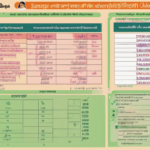Purnima: A Celestial Celebration
Introduction:
Purnima, also known as the Full Moon Day, holds cultural and religious significance in several traditions around the world. Occurring every lunar month, Purnima is a time of heightened energy, spiritual practices, and festivities. In this article, we will explore the significance of Purnima, its observance in different cultures, and the practices associated with this auspicious day.
What is Purnima?
Purnima, derived from the Sanskrit word ‘Purnima,’ signifies the full moon day in the Hindu lunar calendar. It marks the phase when the moon is completely illuminated, symbolizing completeness and abundance. Purnima falls on the fifteenth day of the lunar month, aligning with the maximum brightness and energy of the moon.
Significance of Purnima:
Purnima is revered for its spiritual significance and the positive energy it brings. Many cultures consider Purnima as an auspicious time for meditation, prayers, and rituals. It is believed that the positive energies during Purnima enhance spiritual growth, promote peace and harmony, and help in manifesting desires.
Observance of Purnima Across Cultures:
1. Hindu Culture:
Purnima holds immense importance in Hindu culture, with specific Purnima dates dedicated to various deities. The most significant among these is Guru Purnima, honoring spiritual and academic teachers. Devotees observe fasts, offer prayers, and seek blessings on this day.
2. Buddhist Tradition:
In Buddhism, Purnima is known as Uposatha. Monks and followers gather on this day for teachings, meditation, and renewing their commitment to the path of dharma. It is a time for reflection, repentance, and seeking forgiveness.
3. Jain Beliefs:
Jains observe Purnima as a day of spiritual upliftment and self-discipline. Fasting, meditation, and reading of scriptures are common practices on this day. Purnima also marks the culmination of the Chaturmas period for Jain ascetics.
4. Western Traditions:
In Western culture, Purnima is celebrated as the Full Moon Party in various parts of the world, where people come together for music, dance, and cultural festivities under the moonlit sky. It is a time of joy, socializing, and embracing the beauty of nature.
Practices Associated with Purnima:
1. Fasting:
Fasting on Purnima is believed to cleanse the body and mind, promoting spiritual clarity and focus. Many people observe a strict fast or consume sattvic food to enhance their spiritual connection during this time.
2. Meditation and Prayer:
Purnima is considered an ideal time for meditation and prayer due to the heightened cosmic energy. Engaging in spiritual practices during Purnima is said to amplify the benefits and bring inner peace and clarity.
3. Charity and Service:
Engaging in acts of charity, seva (selfless service), and helping those in need is highly encouraged during Purnima. It is believed that such deeds done on this auspicious day yield multiplied benefits and blessings.
4. Moon Gazing:
Gazing at the full moon during Purnima is a practice believed to have a calming and meditative effect. It is thought to enhance one’s connection with nature, foster emotional well-being, and promote introspection.
Frequently Asked Questions (FAQs) about Purnima:
Q1: When is the next Purnima?
A: The date of Purnima varies each month based on the lunar calendar. You can check the specific Purnima date for the upcoming month in the lunar calendar.
Q2: How is Purnima different from Amavasya?
A: Purnima is the Full Moon Day, while Amavasya is the New Moon Day. Purnima symbolizes completeness and abundance, while Amavasya signifies new beginnings and introspection.
Q3: Can anyone observe Purnima fast?
A: Yes, anyone can observe Purnima fast irrespective of their age or gender. It is believed to bring spiritual benefits and positive energy to the individual.
Q4: What are the benefits of meditating during Purnima?
A: Meditating during Purnima can enhance concentration, inner peace, and spiritual growth. The heightened cosmic energy during Purnima is said to amplify the benefits of meditation.
Q5: Is there a specific time for moon gazing during Purnima?
A: Moon gazing is typically done in the evening when the moon is visible. However, you can gaze at the moon at any time during Purnima to experience its calming effects.
Conclusion:
Purnima, the Full Moon Day, is a time of spiritual significance, celebration, and positive energy across various cultures. Whether through fasting, meditation, prayers, or acts of service, observing Purnima allows individuals to connect with their inner selves, nature, and higher energies. Embracing the essence of Purnima can lead to personal growth, emotional well-being, and spiritual fulfillment.




